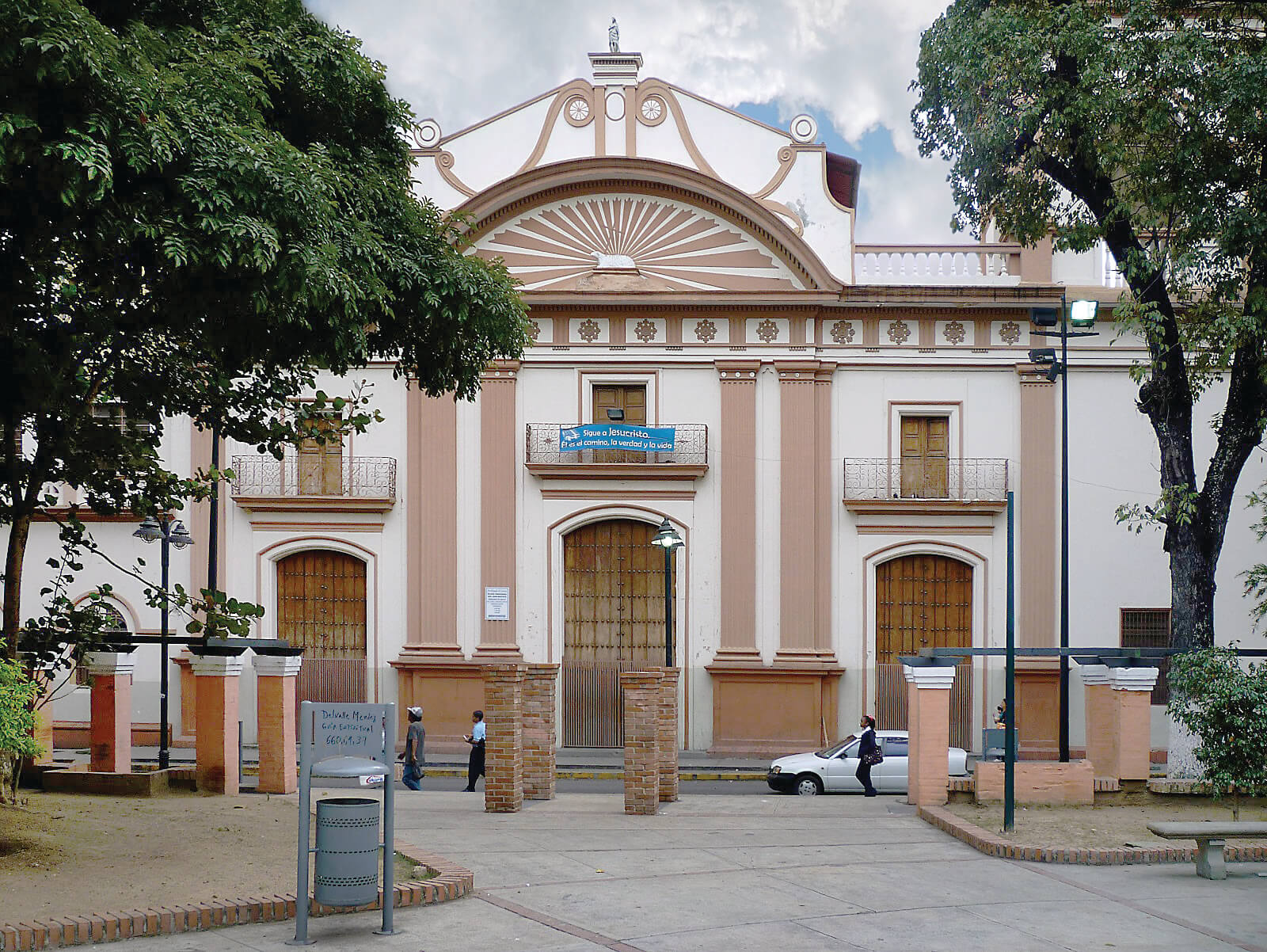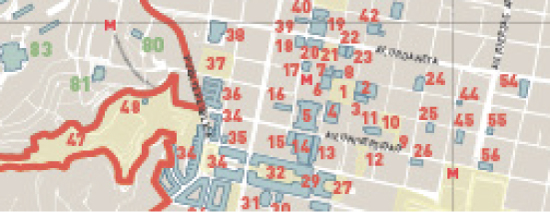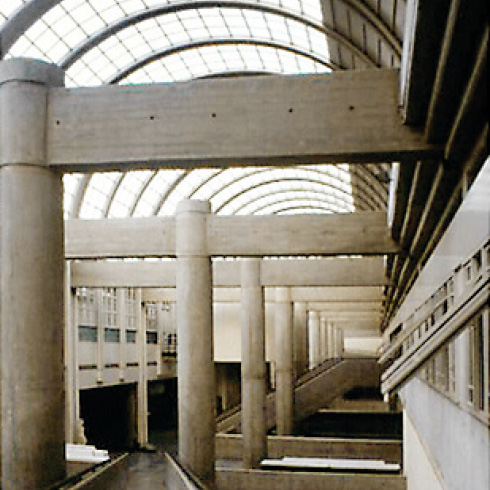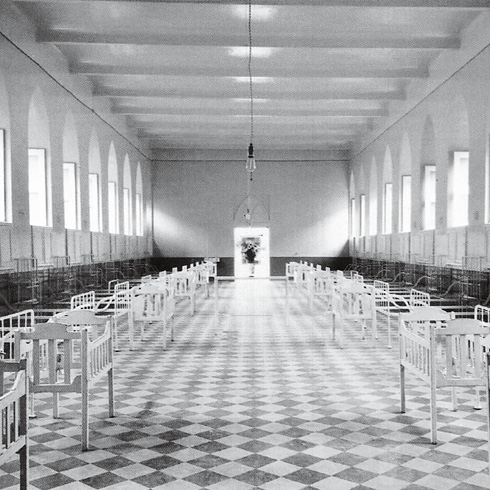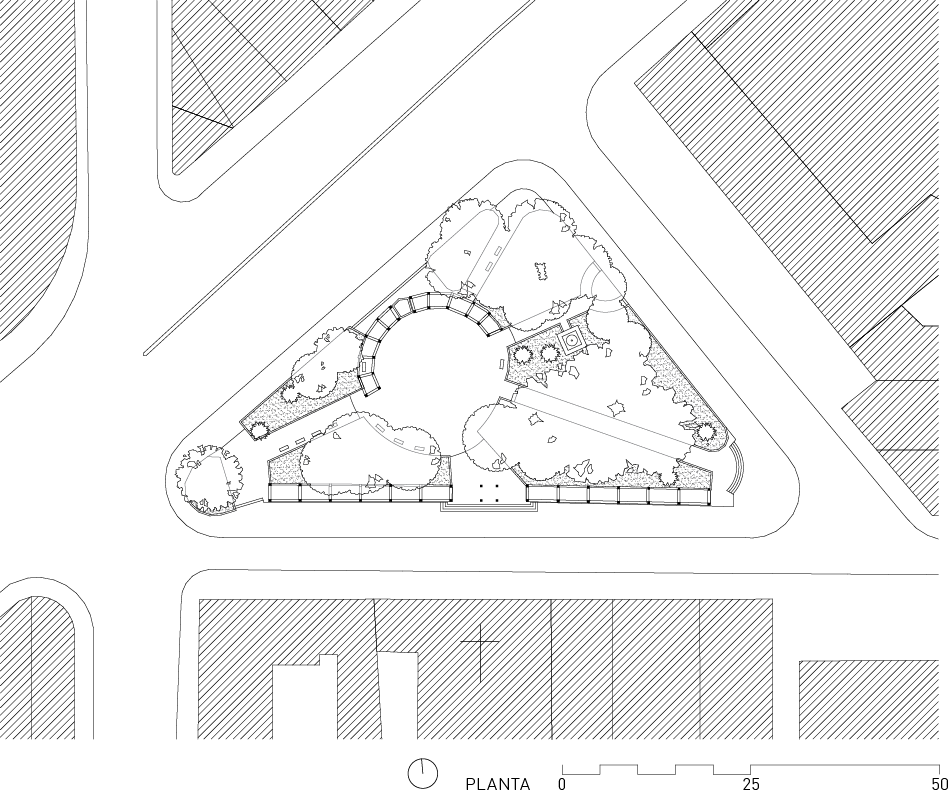DF-51
This plaza, first appearing on maps in 1776, is facing the Church of San Juan, and is one of the oldest in the city. Triangular and bounded by three streets, the small plaza has an unusual urban furnishing: a three level tower for pigeons. Modified with wooden pergolas on square-section brick columns and brick curbstones that are contrary to its spirit, this plaza can be seen in historic images as an urban space with trees and shade. Known as Plaza del León in 1776, its current name is due to capuchin monks requesting the construction of a hospital and a chapel across from the plaza in 1785, which was granted in a Royal Decree by Carlos III. In 1875, by order of Antonio Guzmán Blanco, the name was changed to Plaza de Abril, to commemorate his ascent to power in April 1870. In 1881, it was renamed Plaza Zamora with a statue in his honor (by French sculptor Gabriel Vital-Dubray, 1813-1892). Its original size and proportions were considerably reduced in 1952, when Avenida San Martín was completed. With the relocation of the Zamora monument to his hometown of Cúa in 1959, the plaza was named Plaza Capuchinos. An interesting fact is that on January 10, 1827, Bolívar stopped at the plaza together with José Antonio Páez, in what would be his last visit to Caracas.
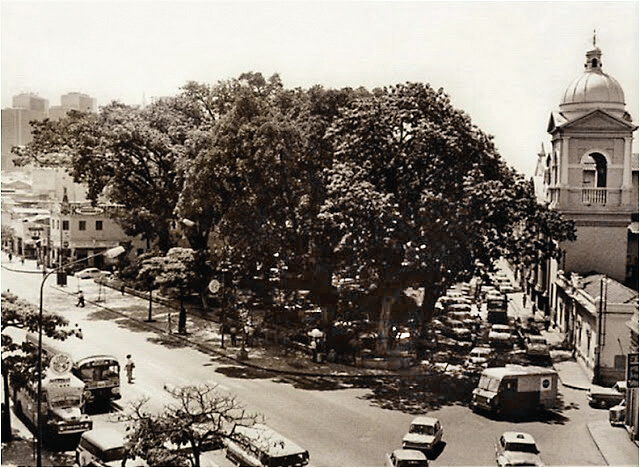
DF-50
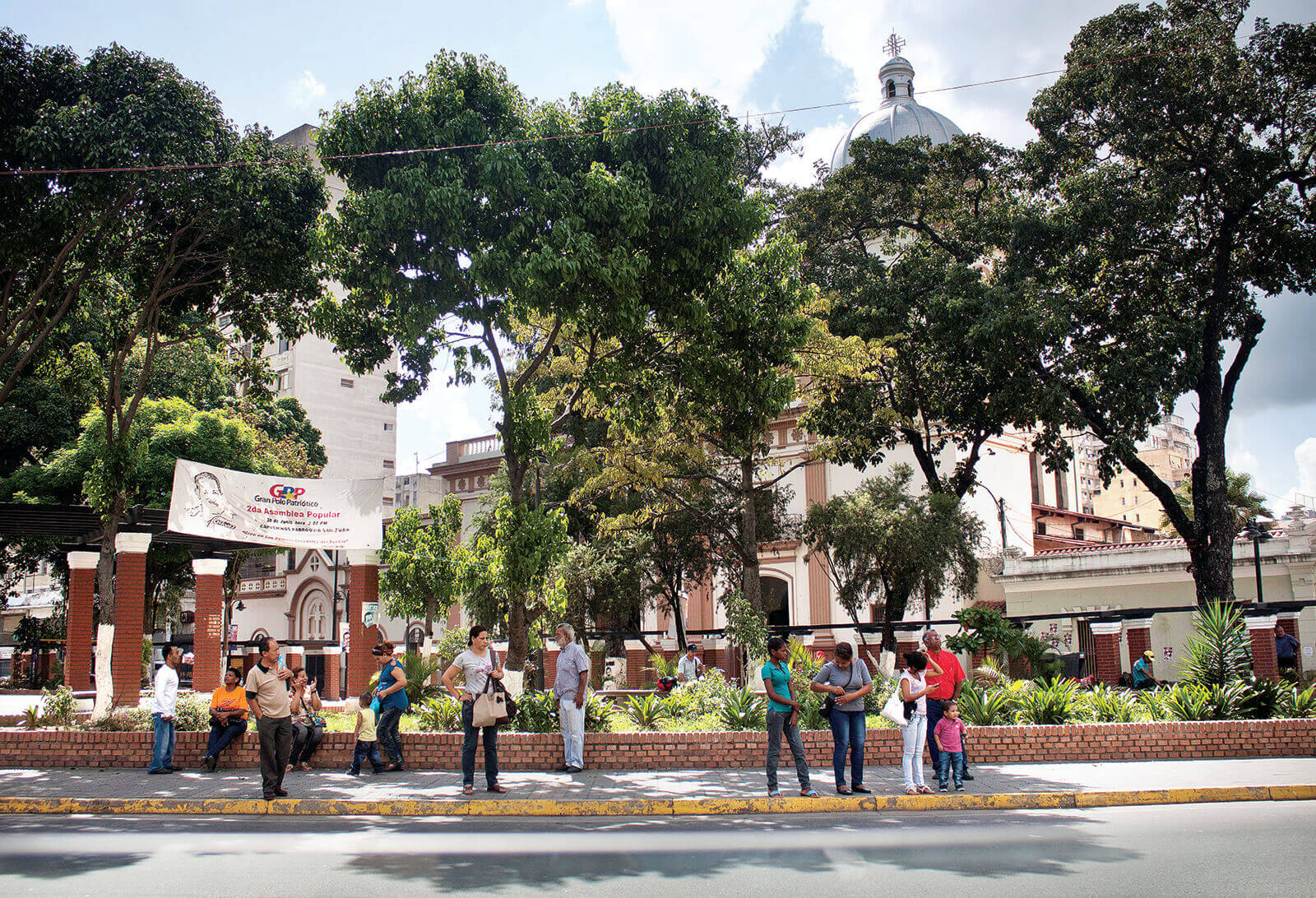
SUN


